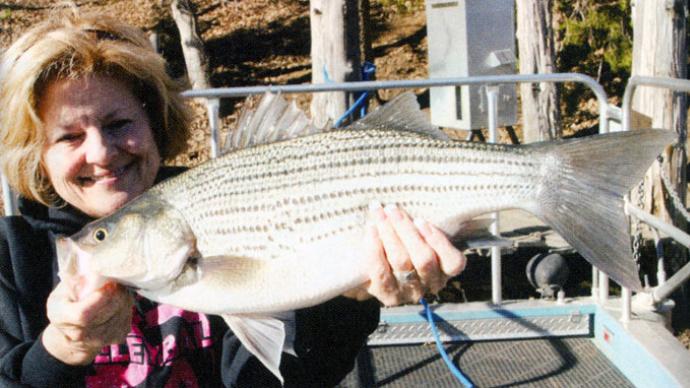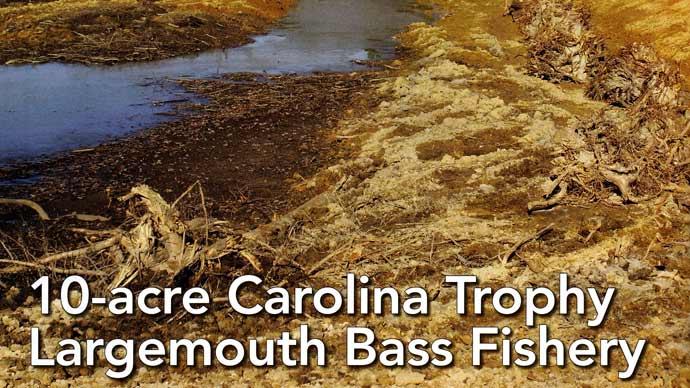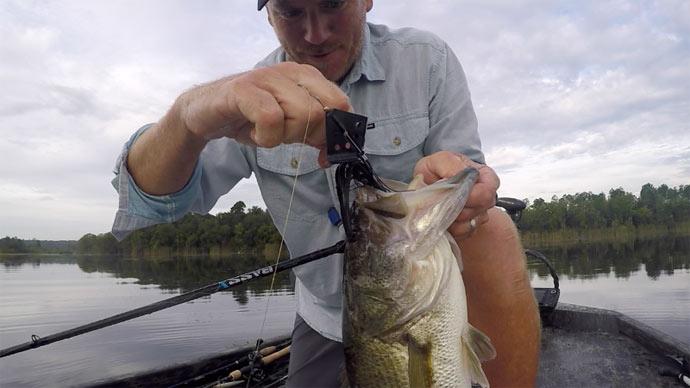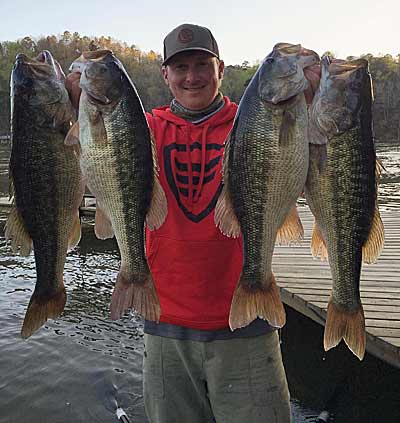
The spotted bass is a unique species that are not represented in every single corner of the country, but they are prevalent enough that they are a major target for bass anglers. Generally, they're smaller and more peculiar than their largemouth and smallmouth cousins, but they grow big, and their extraordinary fighting abilities make them a favorite target.
If you are after a true giant, a magnum spotted bass; there are a few things you can do to increase the odds. Major League Fishing pro Dustin Connell and Lake Lanier guide and lure maker Rob Jordan share their insights to help you catch the biggest spotted bass of your life.
Connell's Approach is to Find Current
Alabama pro Dustin Connell is good at catching any bass, as evidenced by his REDCREST win with Lake Eufaula largemouth in 2021, but he's deadly when it comes to spotted bass. It's what he likes to fish for, and since he grew up fishing for the famed Coosa River spotted bass, it's part of who he is as an angler. Connell claimed a Bass Pro Tour win in early 2022 on Lewis Smith Lake solely with spotted bass.
His home waters are known for big spotted bass, and he's caught some monsters, including four specimens over seven pounds in Alabama. The Coosa River strain of spotted bass, which grow to monstrous sizes, is now called the Alabama bass, a scientifically different subspecies of the spotted bass. This strain of bass is responsible for the trend of world-record size bass caught in California in recent years as they are the strain stocked there.
Connell's biggest spots share common themes, which apply to how he approaches big spotted bass everywhere he goes.
"People always associate spotted bass with little baits and light line, but that's not the only way to catch them," he said. "It's simple, but throwing bigger baits is the simplest way to target big spotted bass. It could be a glide bait, big topwater, jerkbait, or jig. The bigger ones obviously will eat bigger forage."
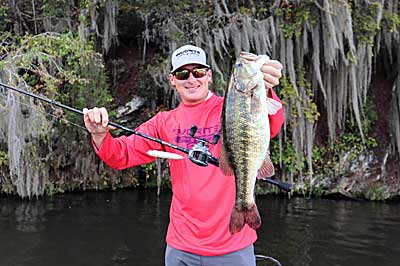
Connell pointed to the West Coast to help make his point. "I say not to be afraid of using giant baits for spotted bass," he shared. "Look at all the guys in California catching big spotted bass on trout-imitating glide baits and swimbaits that are 10-inches long or bigger."
Another critical ingredient to catching big spotted bass is putting yourself in the right location and at the right time of year.
"Two of my biggest spotted bass ever came on a jig, and all of my biggest fish come around current where the fish are more predictable," he said. "You'll find a rock pile or current break and know where they're supposed to be, but the current is vital for catching a big spotted bass where I'm from."
Big bass are always at their heaviest point of the year in the early months and are generally more accessible to anglers. "The other thing is fishing as much as you can when they are their biggest of the year," said Connell. "All my biggest spots have come in February and March. That's always the best time to catch a giant of any bass species."
Jordan Says to Fish Fast and with Flash
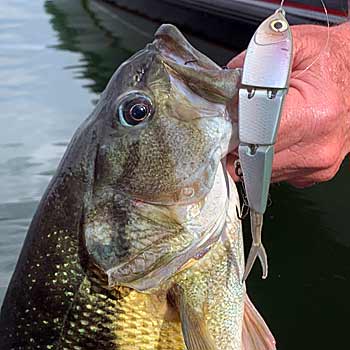
As a longtime guide on Georgia's Lake Lanier, Rob Jordan is blessed to regularly fish one of the best spotted bass lakes in the country. The fish in his home waters are heavily focused on the nomadic blueback herring, a saltwater baitfish illegally introduced into Lanier and other fisheries in the region by striped bass anglers using them for bait. The populations of these baitfish have taken off, and Jordan says the most significant thing to do to catch big spotted bass is to imitate herring, both in how they look and act and how fast they swim.
Swimbaits are a popular option, but Jordan says you can't fish most quickly enough to get the attention of spotted bass, so he made his own. His Mag 44 swimbait is the perfect length of an average herring based on him measuring actual fish. The bait can be fished with plenty of speed near the surface or subsurface while watching his forward-facing sonar and is heavy enough to reach schooling fish out in the distance.
"During the warmer months, you need a bait that swims the same speed as a herring," he said. "Bluegill, trout, and other forage wander around, where bluebacks are lightning-fast saltwater fish, and that's what the bass are used to seeing. Spotted bass are like dogs, and rolling a ball in front of them doesn't get the same reaction as throwing a ball across the yard; you have to get their attention and get them to chase."
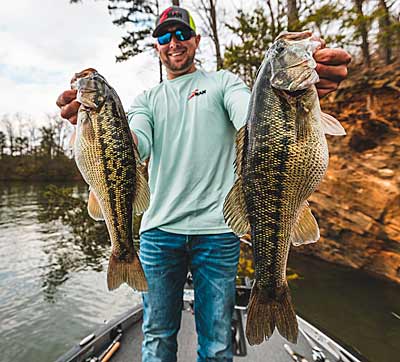
To catch a big summer spot, Jordan looks to where herring will be: usually near deep water around humps, underwater islands, and points. Then, moving quickly with something flashy near the surface is the best way to get the attention of a magnum spotted bass.
"Fishing a flashy bait very quickly on the surface is the best chance at a big one," said Jordan. "You may miss the numbers as other smaller baits, but that's what the big ones want. It could be a flashy chrome walking topwater bait or the 44 Mag, but it needs to be a big target moving fast to get their attention. Spotted bass are almost always in groups when they feed, and their competitive nature kicks in, and they want to get the bait first, and you can use that to your advantage."
The spotted bass is an often-misunderstood fish, and many typically associate them with light line and finesse techniques, but they will eat much bigger baits. To catch the spotted bass of a lifetime, upping your bait size to match the hatch, and getting in the perfect areas will give you the best chance to succeed.


